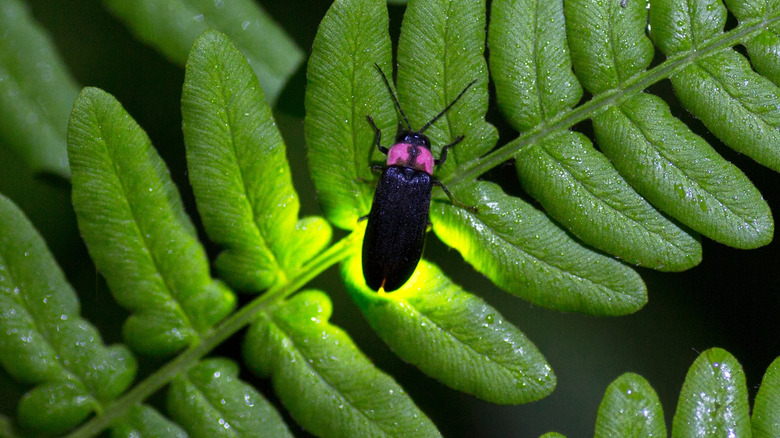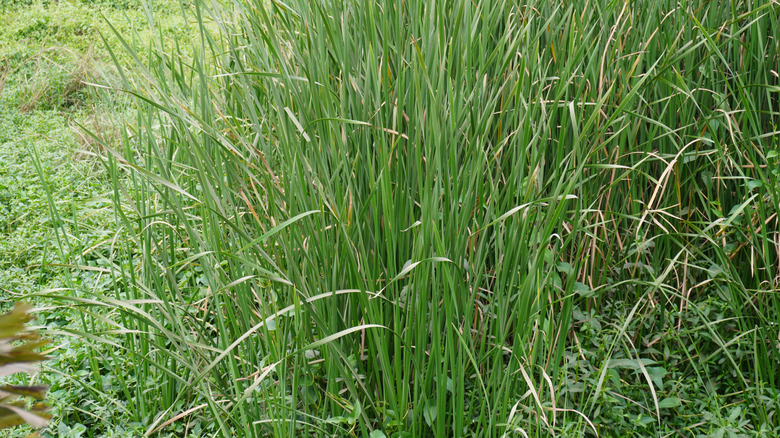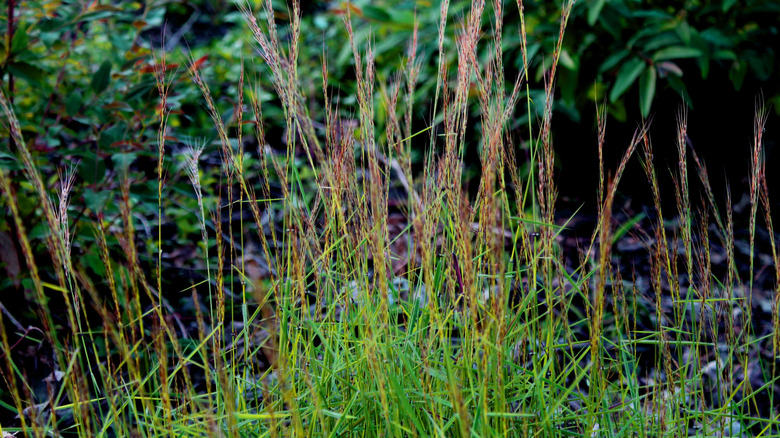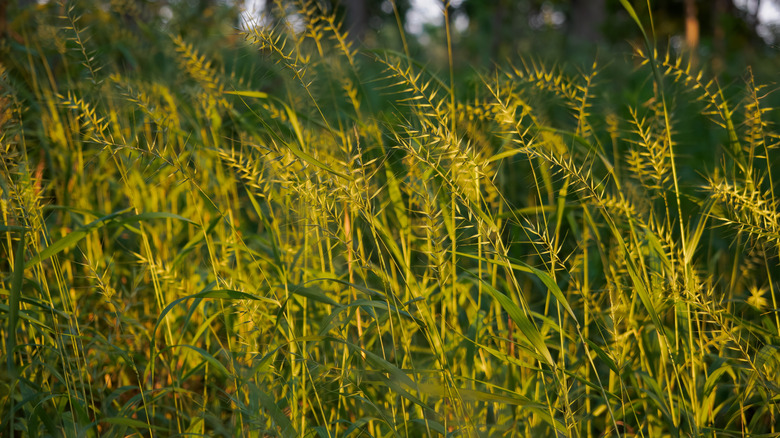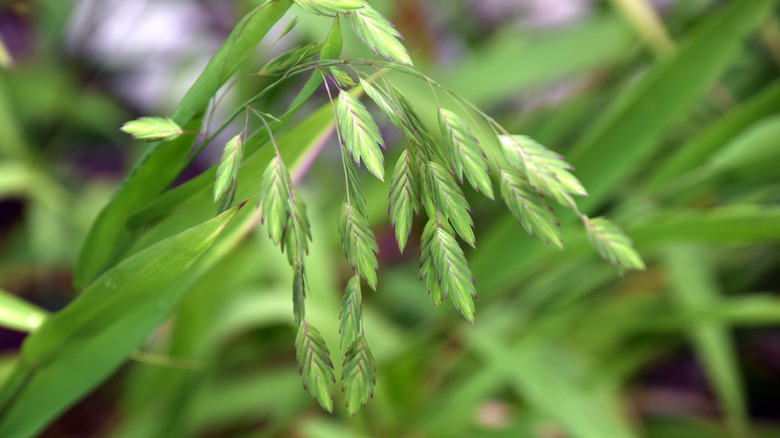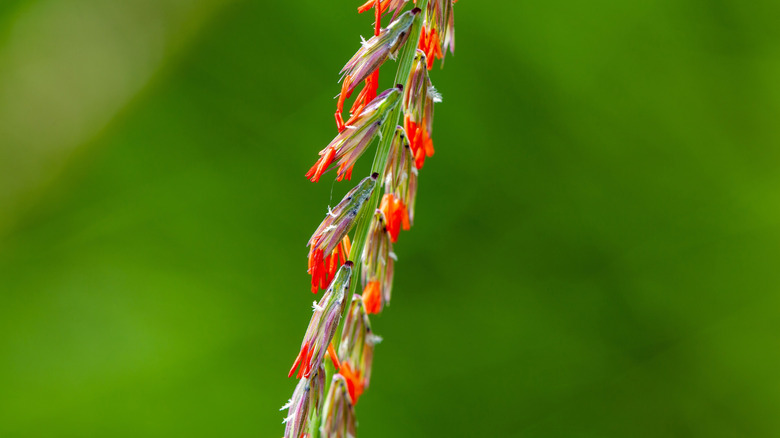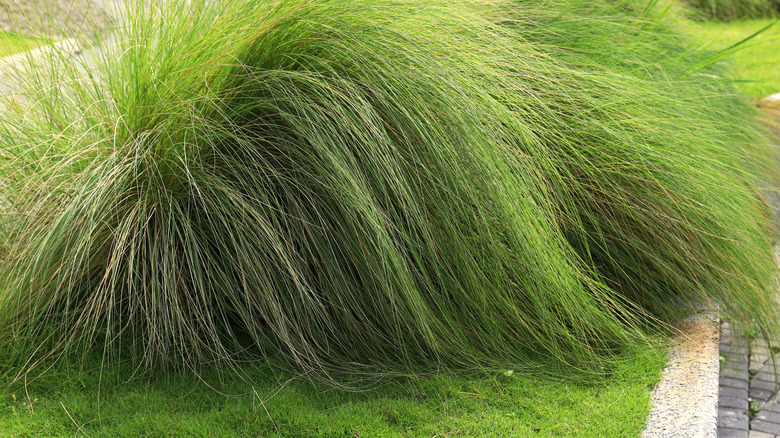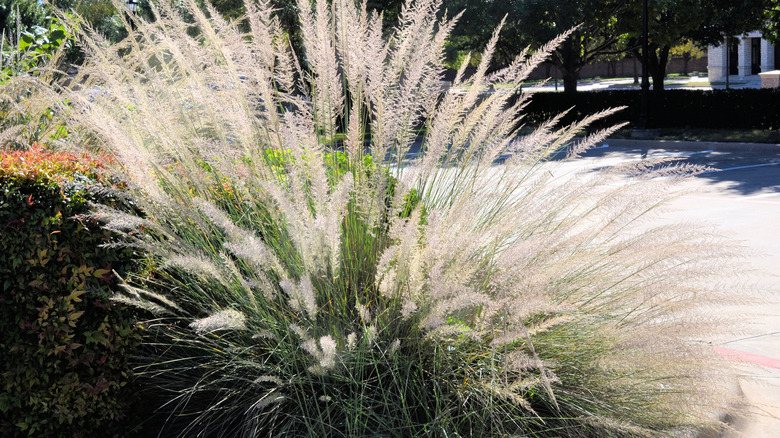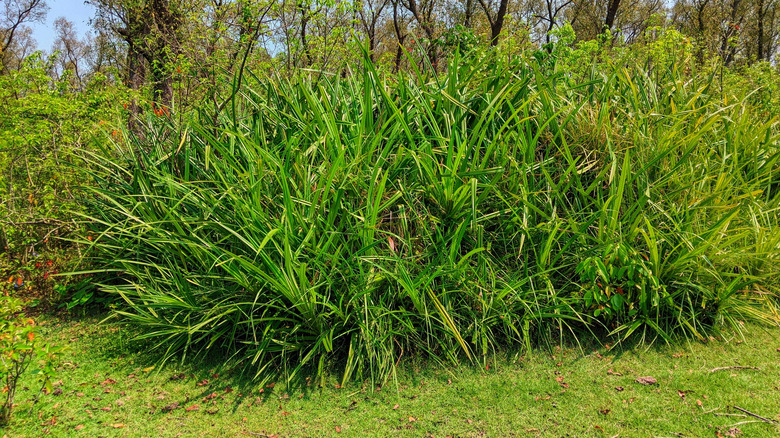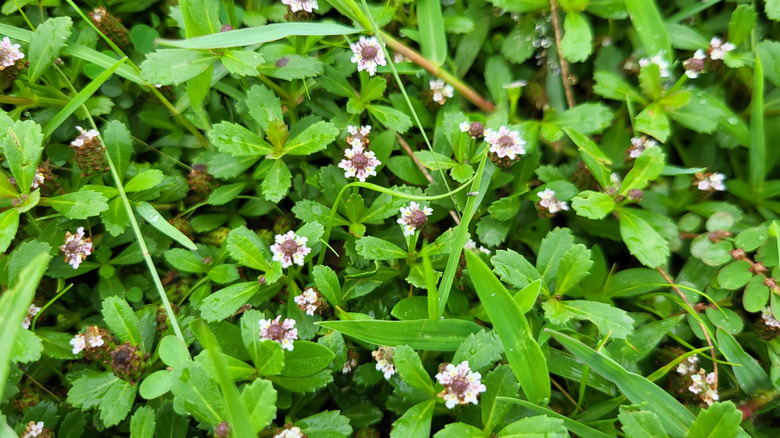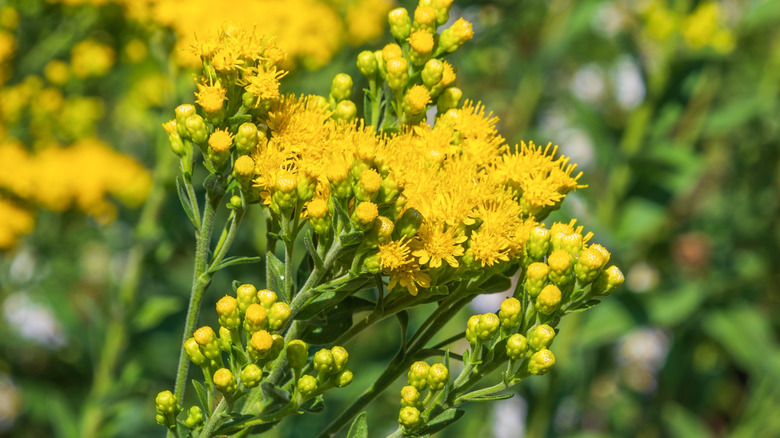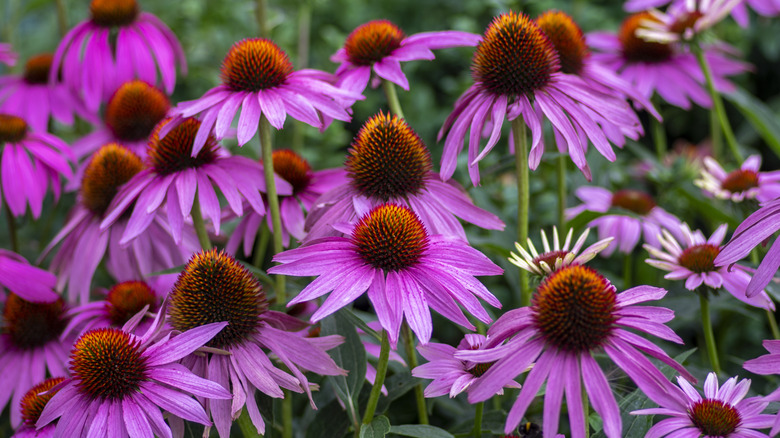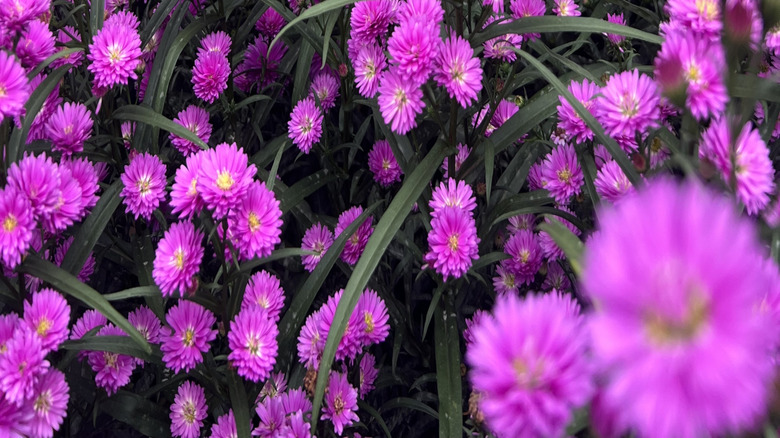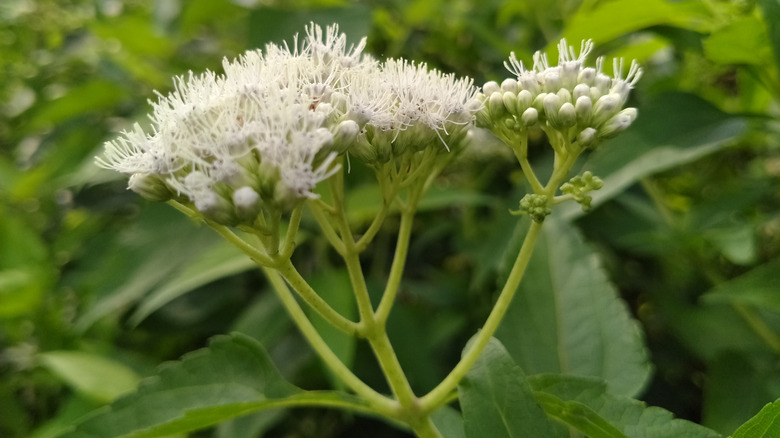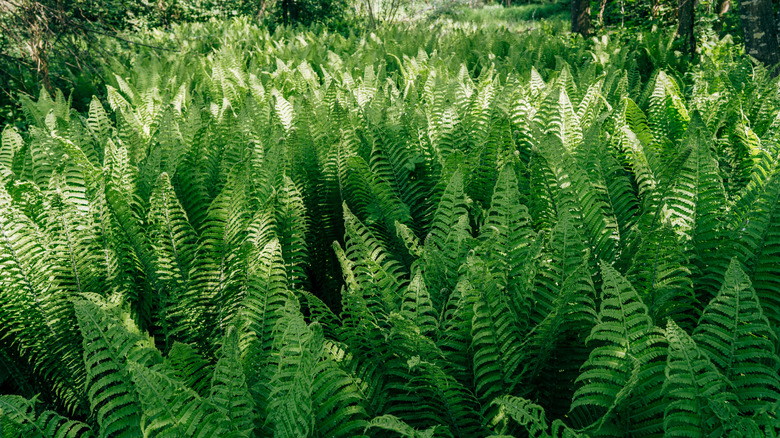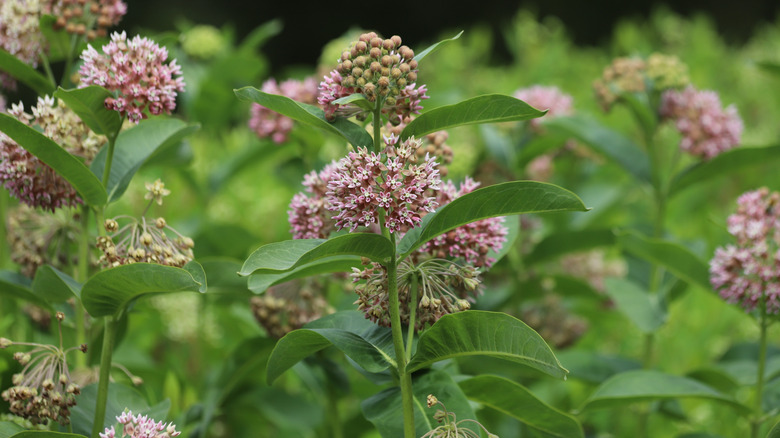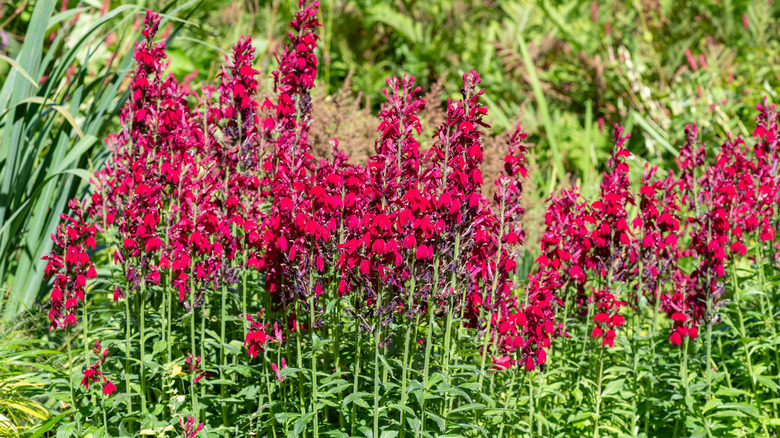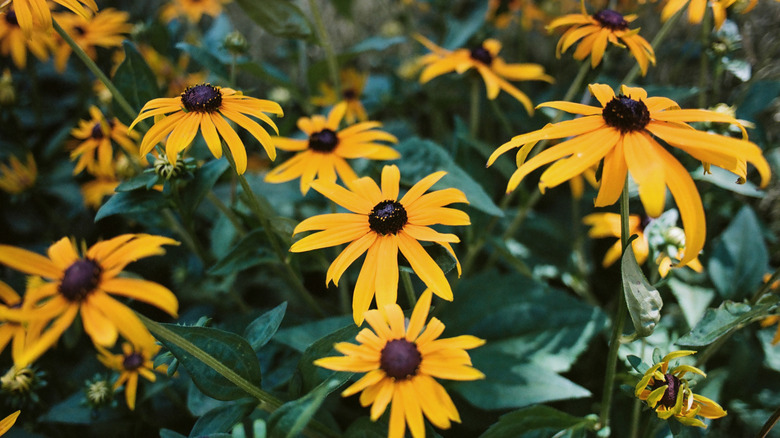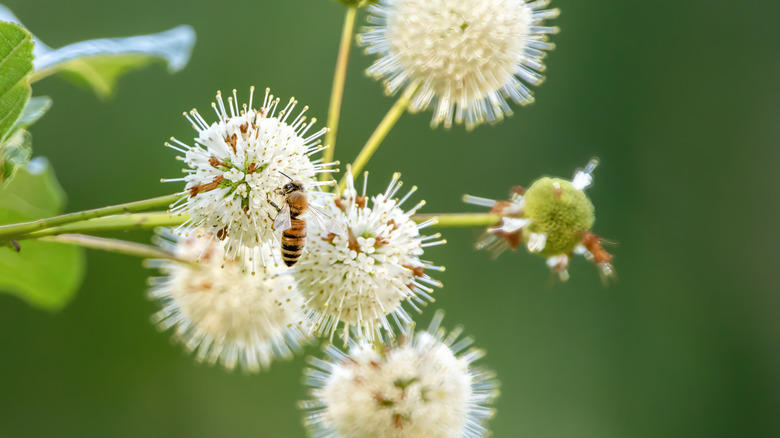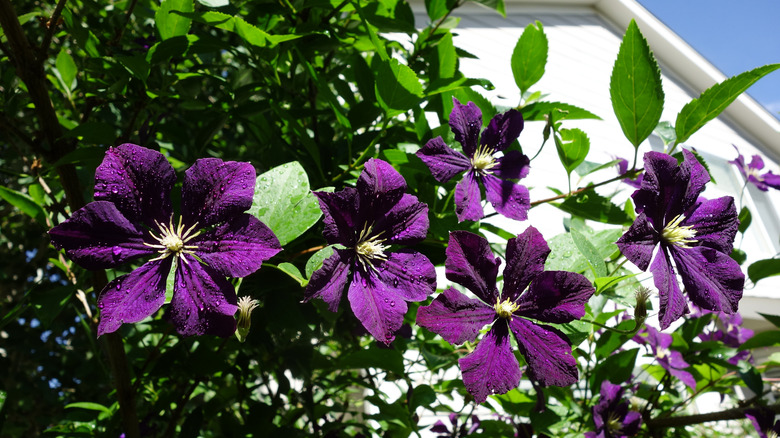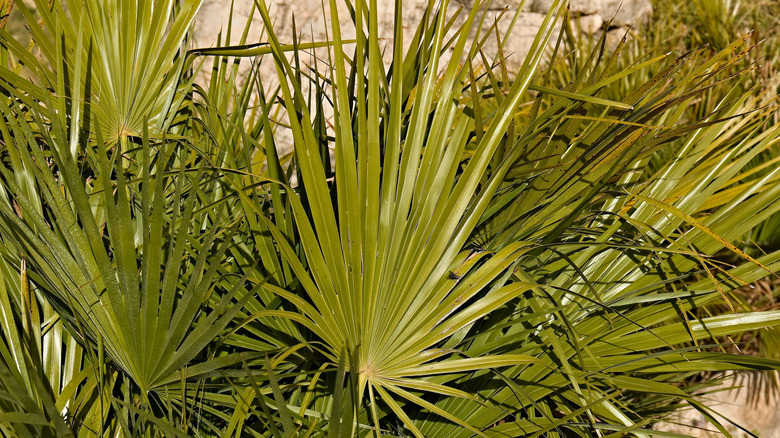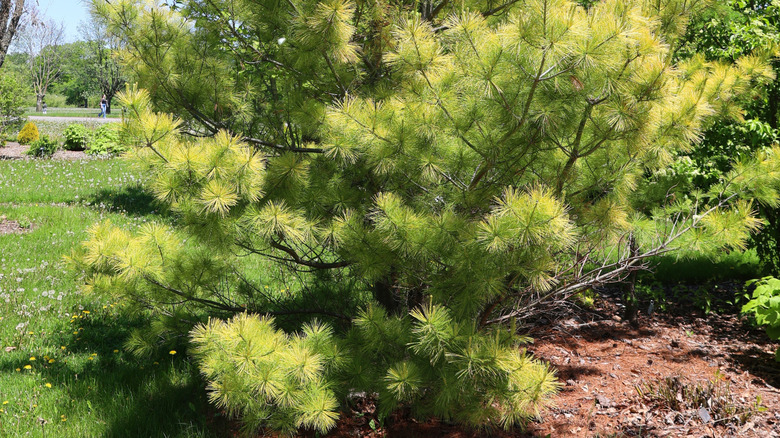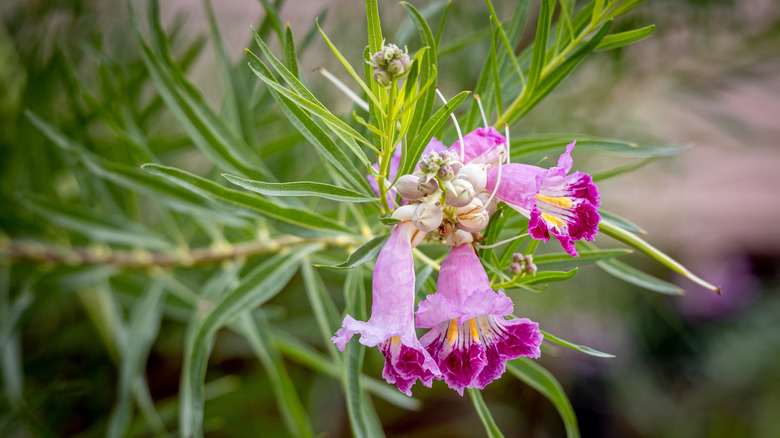22 Native Plants That Turn Your Yard Into A Safe Haven For Fireflies
The only reason not to count the days it will take the summer to transition into fall is perhaps the presence of fireflies. Flashing their tiny bodies against the twilight sky, these lightning bugs truly present a magical sight. Unfortunately, irresponsible pesticide use and urbanization are encroaching on natural areas, depriving these beautiful bugs of their useful habitats and food sources. The incessant shining of porch lights has further worsened the situation, as such light pollution affects their nighttime charades and movement.
So, if you're keen on restoring the whimsical sights you've grown up watching since your childhood, consider taking a few intentional measures to turn your yard into a firefly haven. Start by turning off unnecessary night lights. Moreover, maintaining brush piles and leaf clutter around the garden edges will provide an undisturbed habitat for firefly larvae. Most of all, add native plants to your yard. Since fireflies are familiar with these plants, they're more likely to use them for their daily activities.
When planting for fireflies, include a mix of tall grasses, perennials, and trees. The adults usually feel safe resting in tall blades of switchgrass, Indiangrass, and their ilk, as concealing their presence is easier. Later, they fly off to trees — think pines or desert willows — to find mates. Perennials, such as black-eyed Susan, milkweed, and cardinal flowers, are important, too, because they attract pollinating insects that firefly larvae wolf down for growth. With that said, include the following native plants in your garden to attract fireflies.
Switchgrass
Native throughout North America, switchgrass (Panicum virgatum) is one of the best ornamental grasses to plant to attract fireflies. By maturity, it stands nearly 4 feet tall, unless it's in bloom, when the airy, pink-tinged flower spikes add another 3 feet to its height. Such heights provide an excellent launching pad for fireflies when they're done resting or are ready to mate. Switchgrass also hosts butterflies and birds that adore their year-round attractive foliage for egg-laying, flowers for nectar, and seeds for food during lean months. This drought-tolerant grass grows best in full sun and isn't bothered by deer.
Indiangrass
Like switchgrass, fireflies treat Indiangrass (Sorghastrum nutans) as a launching site when they're ready to fly out for everyday business. After all, these ornamental grasses can grow nearly 7 feet high. Indiangrass hails from the southeast U.S. and is perennial in zones 4 through 9. Aside from fireflies, it's also utilized by grasshoppers, butterflies, and birds for food and cover. These are some of the best plants to grow in shallow soil, though they tolerate clay or infertile soils just as well. Cut back this sun-loving plant in late winter if you don't want it spreading in your landscape.
Bottlebrush grass
If you're looking for shorter grasses that don't grow weedy in the landscape even when given their favorable growth conditions, explore bottlebrush grass (Elymus hystrix). These grow between 2 and 4 feet tall and are native to various regions across the eastern, central, and northern USA, ranging from zones 5 to 9. Hidden within their bluish or silverish-green foliage, female fireflies flash themselves to respond to their male counterparts seeking partners for procreation. Bottlebrush grass is shade-tolerant and can be easily planted underneath tall trees or in woodland settings. However, it can go dormant from extreme summer heat.
River oats
To ratchet up your yard's sensory feels, add river oats (Chasmanthium latifolium) or inland sea oats grass if you live in their native range spanning between the central and eastern U.S. Sunlit, the copper leaves blaze beautifully in the fall, rustling along to light breezes, while serving as the year-long (or more, depending on the species) habitat for larvae or a more short-term abode for egg-laying adult fireflies. Growing about 5 feet tall, these grasses are excellent for cordoning off borders against deer, as these mammals don't enjoy their taste. Be warned, however, that this grass can become weedy.
Sideoats grama
Prominently present east of the Rocky Mountains, save for the southeast U.S. region, sideoats grama (Bouteloua curtipendula) is another native plant that fireflies love to take off from. Interestingly, you can also plant these grasses for a lush, green lawn, as they can be mowed down to a height between 2 and 4 inches. However, doing so will sacrifice the summer-borne, purple-blushed flowers that first attract skippers and later birds when they make way for seeds. So, choose your trimming method and site accordingly. Sideoats grama can be grown from seed in dry, sunny locations.
Deer grass
Native from California to Texas, deer grass (Muhlenbergia rigens) is a low-maintenance ornamental whose narrow blades are utilized by fireflies as hideouts, or when they're sufficiently tall, as launching sites. Relatively pest and disease-free, this native plant is a cool-season grass, perennially grown in zones 6 through 9. If you've a dry, sandy site on offer that tends to remain drought-stressed or where you wouldn't want to water much, deer grass is your best bet to create a green, firefly-friendly area. It tolerates poor drainage as well as clay-textured soils, but be sure to site it in a sunny location.
Lindheimer's muhly
Indigenous to the southwestern U.S. region and a Texas superstar plant, Lindheimer's muhly (Muhlenbergia lindheimeri) provides habitat to fireflies while birds pluck its leaves for nests. Due to its large size that extends 6 feet across, albeit slightly shorter and ornamental foliage, Lindheimer's muhly is typically grown as a specimen, a screen, or as foil to other perennial flowers. If you're the type to dither on pruning, you'll especially enjoy this plant, as it can do without any major trimming — you can simply neaten it up by forking any dead leaves. It requires full sun exposure and excellent drainage.
Eastern gamagrass
If you've got space to spare, plant eastern gamagrass (Tripsacum dactyloides) — this ornamental grass grows about 4 feet wide and 6 feet tall. Its arching clump is made of red-tinged green leaves that offer fireflies adequate space to hide or flash, as the situation demands, apart from providing the height necessary to fly out. Keeping to its name, this warm-season grass is native to the eastern U.S., though it can be successfully grown in zones 6 through 9. This native plant can accommodate moist, shaded conditions, making it suitable for rain gardens or around water features.
Frogfruit
This may be a tad controversial, as some consider frogfruit, or common lippia (Phyla nodiflora), a problematic plant for establishing itself in the lawns. But if you maintain a water-wise, dry landscape and are looking for plants native to the southern states, especially California, Texas, and Florida, frogfruit can be the optimal choice. It doesn't spread in dry sites and is attractive to fireflies and other pollinators as a habitat, nectar, and larval source. The purplish-white flowers are in bloom for most of the year, which can be another appealing feature. Spreading through rhizomes, it also prevents erosion and chokes out weeds.
Goldenrod
Comprising nearly 120 species, goldenrod (Solidago spp.) offers a host of options native to your area, should you choose to plant it. Mostly grown to bring in nectar-hungry bees and butterflies — especially if the area is warm and moist soils are available — goldenrods also establish suitable habitats for female fireflies and their offspring. However, be mindful that this perennial, cold-hardy in zones 2 to 8, can aggressively spread and take over garden beds. To minimize the spread, you must diligently remove spent blooms and separate their clumps every couple of years.
Coneflowers
Encapsulating about nine species under their genus and lots more cultivars that are all native to distinct regions across North America, coneflowers (Echinacea spp.) are another perennial worth consideration. With their colorful, nectar-seeping blooms and seeds, they attract various butterflies and granivorous birds, while their foliage provides cover to fireflies. As they self-sow, they reliably return on their own year after year. Most varieties grow well in dry, sunny sites, are hardy in zones 3 through 9 (though it may vary across species), and exhibit decent drought tolerance. Avoid fertilizing if your yard has rich soil.
Asters
Like coneflowers, asters (Symphyotrichum spp.) include various straight specimens that are indigenous to different areas across the U.S., such as the New England aster (S. novae-angliae) that hails from the eastern U.S., while the smooth blue aster (S. laeve) is prominent in the central region. So, pick your specimen accordingly. These flowering perennials provide crucial habitats for fireflies. Other benefits include their ability to feed hundreds of butterfly caterpillars, including monarchs, as well as migratory and resident birds, including warblers, juncos, finches, and buntings, when petals fall off for seeds. Most varieties do best with full-to-part sun and moist soils.
Late boneset
Also known as late-flowering thoroughwort, late boneset (Eupatorium serotinum) is a gorgeous perennial native to the east of Kansas. Like the other wildflowers present on this list, late boneset is used for cover and harbor by fireflies. Better still, this native plant can turn your garden into a pollinator haven during the day because it draws in myriad varieties of bees, skippers, butterflies, moths, and wasps, but thankfully not deer who find its leaves distasteful. Late boneset grows best in full sun. Keep the soil moist to avoid defoliation in the summer and achieve their maximum mature size.
Ferns
In shaded areas and especially as companions to wildflowers, consider adding ferns to the garden. Not only will they fill out and green up the space during the hot summer when most plants cut a sorry figure, but they'll also attract fireflies during this period, who seek them for habitat. North America alone supports nearly 380 different fern species that are adapted to varied conditions, from dry to moist sites and full shade to some sun. Pick the specimen that's native to your region (local state extensions or nurseries can help) and works best for your yard.
Common milkweed
You may associate milkweed (Asclepias syriaca) with monarch butterflies, but that's not the only pollinator these perennials support. Per a 2014 study presented at the International Firefly Symposium, plenty of fireflies rely on milkweed to meet their food quota. Common milkweed plants are native to the central and eastern U.S. region. Grow them in full sun in well-draining soils. These plants can grow about 5 feet tall and should be planted in an area where you can enjoy their pleasant fragrance. However, be wary that they spread aggressively via seeds and rhizomes, so you must eliminate volunteer seedlings.
Cardinal flower
You may know cardinal flower (Lobelia cardinalis) as the colorful flower you should add to your garden to attract hummingbirds. But it has an unsurprising chokehold on fireflies, too. These lightning bugs rest in their over 3-foot-high, sword-like foliage, while the native's pull on snails, slugs, and other soft-bodied insects may also encourage the adult females to nurture their larvae in this perennial. Cardinal flowers grow best in zones 3 to 9, where moist or damp soils receive full sun or dappled shade. They are native to eastern states. Unfortunately, they are toxic if ingested by humans and pets.
Black-eyed Susan
The various varieties of black-eyed Susan (Rudbeckia spp.), including R. hirta and R. fulgida, are used as a resting and cover place by fireflies. As a bonus, these bugs will also gain the company of diverse pollinating insects, such as bees, butterflies, and moths, when these plants bloom from summer through frost. Not all black-eyed Susan plants are perennials, so check their labels before making any purchases. Also, start them with plugs or starts, rather than seeds, unless you're ready to put in the effort to cold stratify them. These plants are drought-tolerant and grow best in full sun.
Buttonbush
Widely prevalent across the eastern U.S. and Chicago area, buttonbush (Cephalanthus occidentalis) is a medium-sized shrub that holds some allure for female fireflies. Their almost 3-inch-wide bright green leaves offer the bugs enough room to veil their presence until they're ready to receive their male counterparts' advances and reproduce. Even when fireflies aren't active, buttonbush will continue to animate your garden through scores of pollinators and birds that visit their fragrant flowers and seeds. In sunny, acidic, wet sites, buttonbush can grow nearly 8 feet tall and 6 feet wide. It can withstand deer pressure, compaction, and heat.
Purple leatherflower
Play with your garden design by training purple leatherflower (Clematis pitcheri) over a trellis or a tall shrub. Soon, these 13-foot-high vines will be covered in fireflies looking to lay eggs or their babies that tend to glow at night while devouring any slugs or snails attacking the vine. Drought and heat-tolerant, these vines are perennial only in zones 5 through 9, though they'll die back from frost. They're native to the central and southern parts of the U.S. and prefer moist soils in sunny locations. You'll need to prune the foliage in early spring to maintain a neat appearance.
Dwarf palmetto
Those dwelling in the southeast U.S. range and are saddled with alkaline soils may benefit fireflies by growing dwarf palmetto (Sabal minor) in their yards. These flashy bugs utilize their fan-shaped foliage both for hiding and signaling their presence when they're ready to breed. Even when the firefly show is over, these 10-foot-tall shrubs maintain their visual appeal into the winter, owing to their evergreen foliage that deer have little care to nibble on. However, note that dwarf palmetto is a slow grower, and you may need to purchase bigger plants if you need a ready screen.
Pines
To make up for the habitat loss that's causing a decline in the firefly population, consider adding a pine tree (Pinus spp.) that's native to your area. With their dense canopies, these sentinels enable fireflies to mate in peace without getting distracted from artificial lights streaming throughout the night. In addition, they offer ideal hiding spots during the day. Besides, female insects are also partial to pine needles that litter the ground during the cold months for their larvae. Potential options include P. ponderosa (western U.S.), P. elliottii (southern U.S.), and P. resinosa (eastern U.S.), to name a few.
Desert willow
Desert willow (Chilopsis linearis) trees are native to the areas south of south-central Texas and west of Baja California. Their leaves hold the primary attractant to fireflies, who conceal themselves within their folds and reappear once they're ready to reveal their presence for reproduction. As gardeners, however, you'll also find their trumpet flowers a delightful sight, especially when they're swarmed with butterflies and hummingbirds. Desert willows are ideal in drought-prone areas, where a little water goes a long way in keeping these small trees green through the summer, even when planted in full sun exposure.
